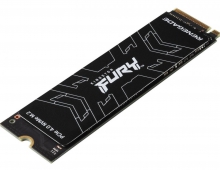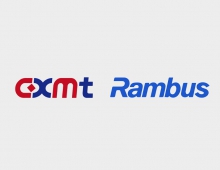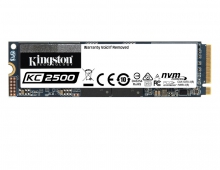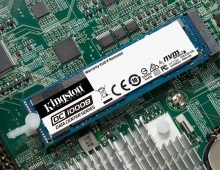
Rambus and Kingston Co-Develop Threaded Module Prototype for Multi-Core Computing
Rambus and Kingston Technology today announced a collaborative development of a threaded module prototype using DDR3 DRAM technology.
Initial silicon results show an improvement in data throughput of up to 50 percent, while reducing power consumption by 20 percent compared to conventional modules, according to data provided by both companies.
As demand grows for throughput-intensive computing in notebooks, desktops and servers, the performance requirements on DRAM memory subsystems rises dramatically. As a result, multi-core computing requires more bandwidth and higher rates of random access from DRAM memory.
"As multi-core computing becomes pervasive, DRAM memory subsystems will be severely challenged to deliver the data throughput required," said Craig Hampel, Rambus Fellow. "Our innovative module threading technology employs parallelism to deliver the higher memory bandwidth needed for multi-core systems while reducing overall power consumption."
Threaded memory module technology is implemented utilizing industry-standard DDR3 devices and a conventional module infrastructure. It is capable of providing greater power efficiency for computing systems by partitioning modules into multiple independent channels that share a common command/address port. Threaded modules can support 64-byte memory transfers at full bus utilization, resulting in efficiency gains of up to 50 percent when compared to current DDR3 memory modules. In addition, DRAMs in threaded modules are activated half as often as in conventional modules, resulting in a 20 percent reduction in overall module power.
Rambus will showcase a static demonstration of this prototype at the Intel Developer Forum, September 22 24, 2009 at Moscone West in San Francisco, CA.
As demand grows for throughput-intensive computing in notebooks, desktops and servers, the performance requirements on DRAM memory subsystems rises dramatically. As a result, multi-core computing requires more bandwidth and higher rates of random access from DRAM memory.
"As multi-core computing becomes pervasive, DRAM memory subsystems will be severely challenged to deliver the data throughput required," said Craig Hampel, Rambus Fellow. "Our innovative module threading technology employs parallelism to deliver the higher memory bandwidth needed for multi-core systems while reducing overall power consumption."
Threaded memory module technology is implemented utilizing industry-standard DDR3 devices and a conventional module infrastructure. It is capable of providing greater power efficiency for computing systems by partitioning modules into multiple independent channels that share a common command/address port. Threaded modules can support 64-byte memory transfers at full bus utilization, resulting in efficiency gains of up to 50 percent when compared to current DDR3 memory modules. In addition, DRAMs in threaded modules are activated half as often as in conventional modules, resulting in a 20 percent reduction in overall module power.
Rambus will showcase a static demonstration of this prototype at the Intel Developer Forum, September 22 24, 2009 at Moscone West in San Francisco, CA.





















